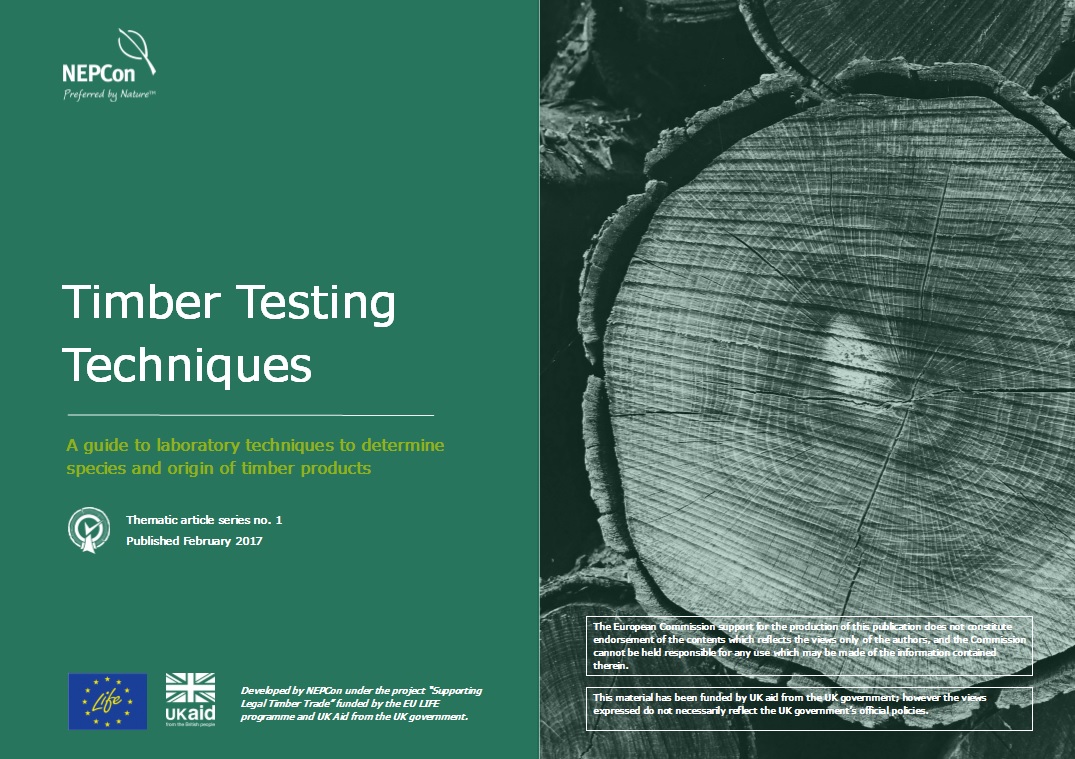Laboratory techniques to determine species and origin of timber
Today, we publish the first in our new series of thematic articles on the EU Timber Regulation as part of our project ‘Support Legal Timber Trade’.
If you’re a company in Europe that buys or sells timber products, or if your work touches on due diligence systems or timber legality, we hope that these articles will be useful for you. We’ll be looking at topics such as whether you can safely assume that certified timber, such as FSC timber, meets the EU requirements, or what form of documents you need to collect in order to demonstrate that your timber was sourced legally. Each article will be a few pages long, and we’ll be publishing them here on our website over the course of 2017. If you have ideas for the sort of topics that you would like to know more about to help you meet EU requirements, please do get in touch.
This first article looks at the different laboratory techniques that can be used to help verify the origin and/or species of timber. Such tests can provide a powerful independent verification of claims made by suppliers, and can therefore form a useful part of a due diligence system.
 The article explores the three most prevalent commercially available methods:
The article explores the three most prevalent commercially available methods:
- Wood anatomy analysis, which can be used to verify timber species.
- DNA analysis, which can be used to verify timber species and origin.
- Stable isotope analysis, which can be used to verify the origin of timber.
For each technique, we look at when it should be used, what its limitations are, how much it costs and which laboratories offer the service.
To read the article, click here.
To suggest new topics that you would like us to consider researching, contact Rosie Sharpe on ros@nepcon.org
This series of thematic articles is being produced as a part of the project ‘Supporting Legal Timber Trade’ (see here and here) funded by the EU LIFE Programme and UK aid from the UK government. The views expressed do not necessarily reflect the EU or the UK government’s official policies.



